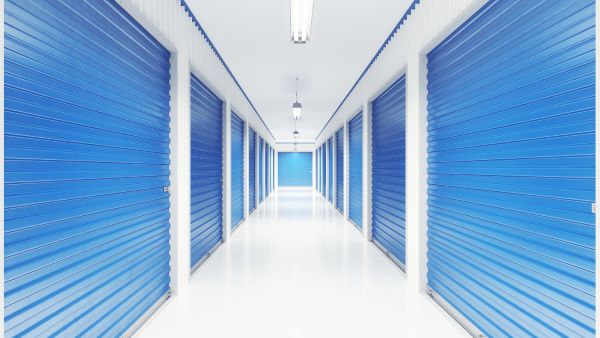Storage Costs During a Move: What You Need to Know to Avoid Surprises
Storage costs can have a significant impact on your moving budget. Whether you need more space or your moving dates don’t line up, understanding how much it costs to keep your belongings safe helps you plan ahead and avoid unexpected expenses. From contracts to climate control and insurance, here is what you need to know about storage costs to prevent surprises on moving day.

Pricing Structure
Storage fees vary widely based on how much space you need, when you move in, and the length of your contract. Here’s a practical breakdown to help you estimate possible costs.
Size
Floor space is one of the biggest factors when it comes to pricing. Units come in three sizes, with costs ranging from less than $50 to over $100 a month.
- Small. Designed for small apartments and seasonal items, these units are normally between 5x5 and 5x10 feet ‒ roughly the size of a large closet or half the size of a typical garage. They hold approximately 50 boxes or a few small items of furniture, such as a couch, twin bed, and dining table.
- Medium. Large enough to hold the contents of a one or two bedroom home, these units are generally 10x10 or 10x15 feet in size ‒ about the same as a small bedroom or standard one car garage. They’re big enough to hold large furniture, such as a refrigerator, queen bed, and living room set, or approximately 100-150 boxes.
- Large. Spacious enough to fit the contents of a 3-4 bedroom home, these units are typically 10x20 or 10x30 feet ‒ roughly the size of a one or two car garage. They can comfortably store major appliances, several large pieces of furniture, or up to 300 boxes, depending how efficiently they’re packed.
Duration
How long you plan to rent your unit has a significant impact on your storage costs. Safe and secure storage solutions help you move at your own pace or keep seasonal items safe until you need them. Whether you’re facing a local, long-distance, or international move, there are two options available.
- Month-to-Month. These contracts provide maximum flexibility, but generally come with higher rates, since you’re free to leave at any time. A good choice for short term rentals, when you only need to keep your belongings safe for a few months.
- Long-Term. Storage companies typically offer lower rates to customers willing to commit for an extended period. The most common rental terms are three, six, and twelve months, with the monthly fees gradually decreasing the longer you agree to stay.
Timing
Demand for storage units fluctuates throughout the year. Rates are highest during summer, when the majority of moves occur. The need for storage services declines over winter, particularly in January and February. In order to attract customers, companies frequently lower their rates around this time of year.
Insurance
While some home insurance policies extend to items stored “off-premise,” they come with strict limits ‒ often capping compensation at ten percent. As a result, most customers are obliged to purchase dedicated storage insurance to protect them from theft, fire, smoke, pests, water damage, vandalism, and natural disasters.
Additional Services
While safety, security, and convenience are built into their basic pricing structure, many storage companies offer additional benefits to improve their customers’ peace of mind. These include:
- Climate Control. Standard storage units are not air conditioned. Though not an issue for most household goods, these spaces are not well suited to items sensitive to heat, cold, and moisture (artwork, leather goods, electronics, etc.). Climate control provides stable temperatures, but raises costs by 20-50 percent, depending on your location. The price of a temperature-controlled storage unit is generally higher in warm, humid regions than in cool, dry ones.
- 24-Hour Access. Most storage facilities only allow customers to access their belongings during normal business hours. However, some offer round-the-clock availability for customers with irregular schedules, though it comes with a small fee.
- Security Monitoring. Storage companies know how important your belongings are to you, which is why their facilities are protected by reinforced walls, perimeter fencing, and video surveillance. However, these safeguards are designed for the entire complex, not individual units. Additional measures such as alarms, security cameras, and biometric scanners are available, though they increase your monthly rate.
Storage can be a huge help during a move, but expenses add up quickly if you aren’t careful. Too often, homeowners don’t consider storage costs until the last minute. Plan ahead to make sure your relocation stays on budget. From unit size to climate control, there are a lot of factors to take into account in order to make your experience smooth and stress-free.
Long Distance Moving and Storage Solutions
Whether you're starting a new job, moving closer to family, or seeking a change in scenery, North American Van Lines helps make the relocation process as easy and simple as possible. From planning to packing to shipping, set-up, and storage, our full-service moving teams support you every step of the way. Make your move an adventure instead of a headache. Contact us today for a free quote!

